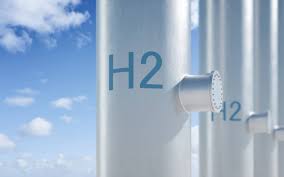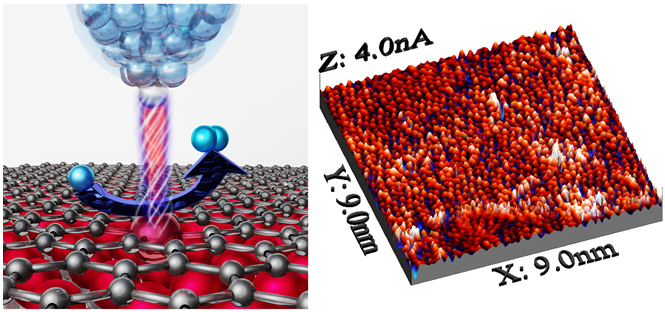
Hydrogen catalysts
The development of hydrogen evolution reaction catalysts has a key meaning for hydrogen economy. As NATURE CATALYSIS reports, a group of scientists involved in this subject developed a new methodology which enables a rational optimisation of catalytic materials. Among them is dr Tomasz Kosmala from the Institute of Experimental Physics of the Faculty of Physics and Astronomy of the University of Wrocław, who, in collaboration with a research group from the Padova University, headed by prof. Gaetano Granozzi, and a group of theorists from the University of Milano-Bicocca, headed prof. Christina Di Valentin, published studies titled Operando visualization of the hydrogen evolution reaction with atomic-scale precision at different metal-graphene interfaces.
The paper demonstrates that it is possible to identify in operando the most catalytically active sites at the single atom level based on the analysis of tunnel current noise recorded with an electrochemical scanning tunneling microscope (EC-STM). The unique cr-EC-STM (cr for current roughness) technology is available at the research institutes in Wrocław and Padova. The quality of obtained data is unprecedented and the sequence of activity of individual electrocatalytic sites obtained experimentally was confirmed by theoretical calculations based on state-of-the-art quantum-mechanical simulation methods developed at Bicocca University in Milan.
The cr-EC-STM method has been applied to innovative catalytic systems reflecting core-shell nanostructured catalysts based on 2D material (graphene) and base metal (iron). Studies have shown that ultra-thin layers of iron (about 100,000 times thinner than the diameter of a human hair) coated with graphene exhibit exceptional catalytic activity, higher than for platinum alone. Using the cr-EC-STM method, it was found that single iron atoms trapped in the gaps of graphene’s structure and its deformations on the iron atomic steps were responsible for such high catalytic activity.

Added by: Joanna Molenda-Żakowicz
Dean’s representative for faculty promotion and media relations
